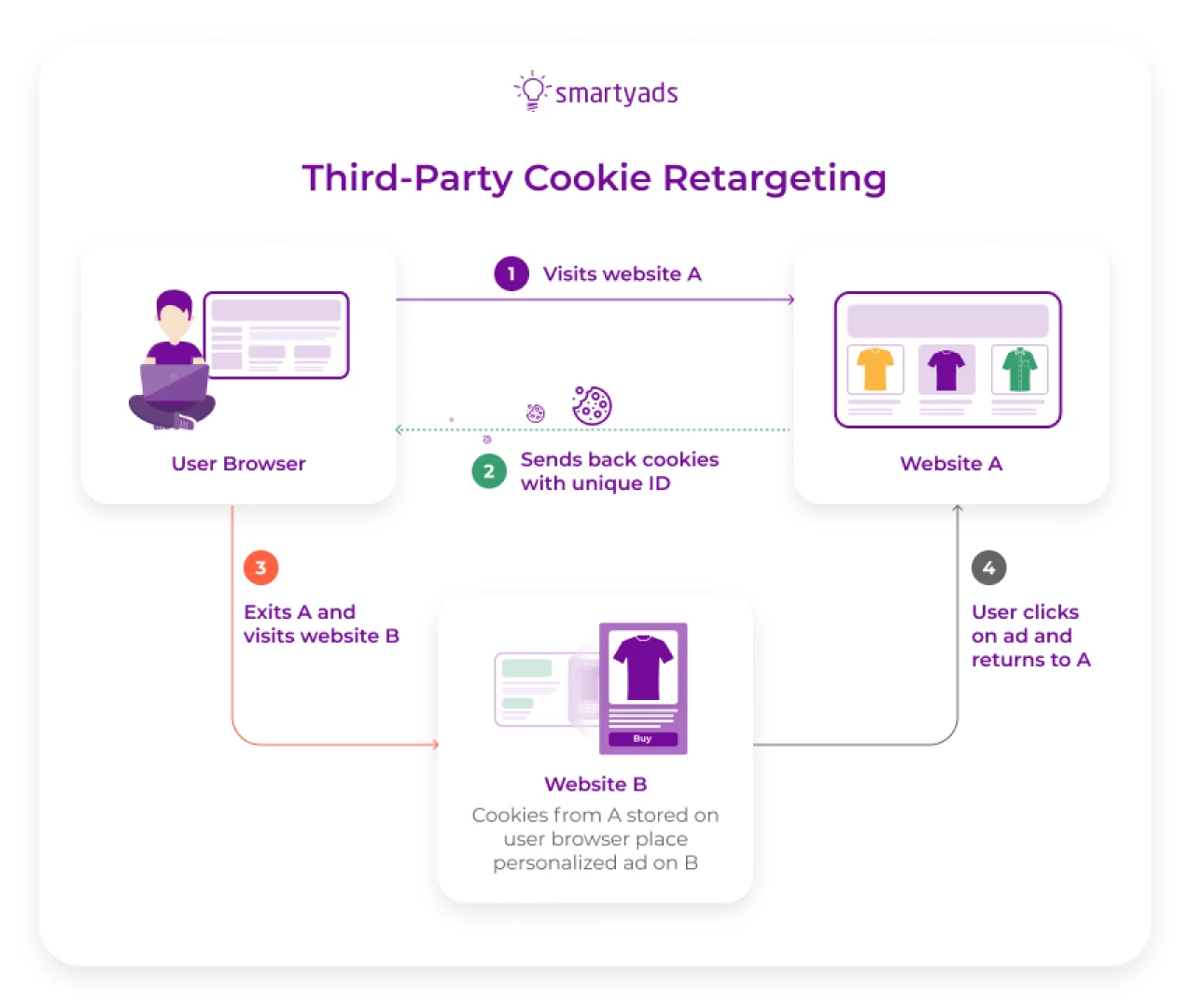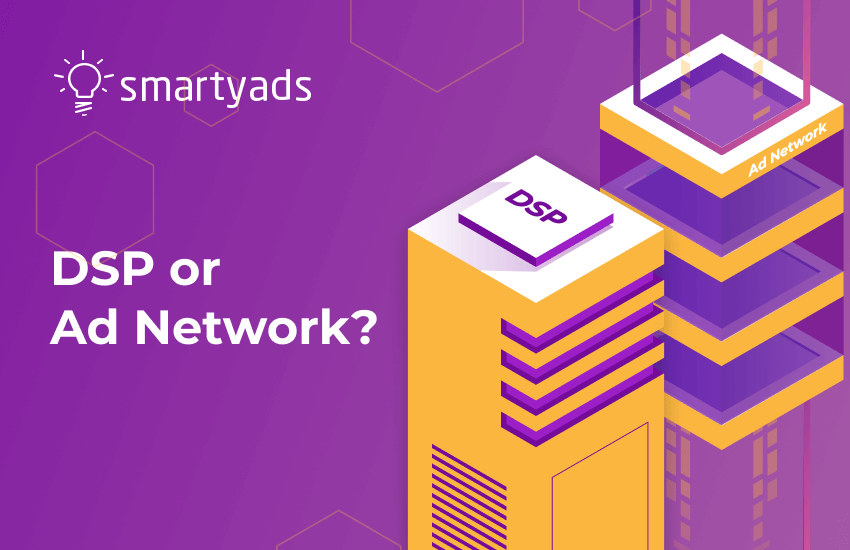For a long time, it has been difficult to figure out if advertising actually works. People used to struggle to find a way to measure the success of advertising campaigns. Only recently, in the latter half of the last century, did the idea of "return on investment" become popular and help make measuring success easier.
Since then, the landscape has undergone a seismic shift. Advertisers now wield an arsenal of sophisticated tracking technologies, furnishing them with interesting insights into ad campaign performance. In the dynamic realm of digital commerce, the optimization of advertising initiatives and the maximization of ROI stand as imperatives for triumph. Ad tracking data is an important tool for marketers to understand their advertising campaigns. It helps to learn areas that need correction and make the best decisions to achieve success. By analyzing this data, marketers can adjust their approach and make informed decisions about where and how to advertise. In short, ad tracking data is an essential tool for any marketer looking to boost the effectiveness of their ad campaigns.
In this article, we'll be talking about ad tracking - what it means, how it's done, and how it can be used to improve digital advertising efforts. Ad tracking basically involves collecting data about ads to better understand how they're performing. This information can then be used to make ads more effective and efficient, which can be very helpful for businesses looking to improve their marketing strategies. If you're wondering how to track advertising campaigns, then this article is especially for you.

What is Ad Tracking?
Ad tracking represents the thorough analysis and quantitative evaluation of advertising campaigns spanning diverse channels and platforms. It entails the comprehensive collection of data encompassing metrics like impressions, clicks, conversions, and ROI, aimed at appraising the efficacy of advertisements in captivating and engaging target demographics.
Businesses lean on ad tracking as a linchpin for real-time assessment of advertising efficacy. By analyzing their ads, businesses can gain valuable information about how well their ads are resonating with customers, which channels are driving the most traffic and sales, and areas where they can improve to get better results. Ad tracking furnishes businesses with a trove of numerical data, facilitating astute decision-making in fine-tuning their advertising strategies.
Key Methods for Tracking Ads
After all this said, you may be wondering how to track online ads link. Well, there are several ad tracking tools to help and now we are going to talk about them.
Pixel Tracking
Pixel tracking is a sophisticated technique utilized in digital advertising, which entails embedding a minuscule, imperceptible pixel or code snippet within a webpage or ad creative. This inconspicuous pixel operates as a silent observer, tracking user interactions when they engage with the ad, either by clicking on it or simply viewing it. Upon interaction, the pixel discreetly transmits relevant data back to the advertiser's server, enabling comprehensive tracking of user behavior and providing invaluable insights into the effectiveness of the advertisement. ![]()
Pixel tracking stands as a cornerstone for advertisers, furnishing them with the means to trace user engagement across diverse touchpoints and devices, thereby getting a complete view of the users’ journey. Through the display ad monitoring of this trove of data, advertisers unveil intricate patterns and trends in user conduct, empowering them to hone their targeting strategies, optimize ad aesthetics, and customize their messaging for heightened resonance with their intended audience.
Pixel tracking is a powerful tool that helps advertisers understand how their ads are performing in real-time. This allows them to quickly make changes to their campaigns and improve their impact. With pixel tracking, advertisers can keep a close eye on how their ads are doing and make adjustments as necessary to ensure that they are always reaching the right people at the right time. This is especially important in today's fast-paced market, where things can change quickly, and advertisers need to be able to adapt to stay ahead of the competition.
Beyond its role in tracking user interactions, pixel tracking serves as a catalyst for retargeting campaigns, wherein advertisers orchestrate personalized ad experiences for users based on their prior engagements with the brand. Advertisers use information about what people are interested in to create ads that are more likely to catch their attention. By doing this, they increase the chance that people will buy their products by showing them ads that they are more likely to be interested in.
Cookie-Based Tracking
Cookie-based advertising tracker is a fundamental aspect of digital advertising, leveraging browser cookies to meticulously track user activity across various websites and devices. These cookies, small text files stored on users' browsers, serve as markers that enable advertisers to recognize and monitor individuals who have engaged with their ads or visited their website. By harnessing this data, advertisers can craft targeted advertising campaigns tailored to specific user preferences and behaviors, thereby enhancing engagement and increasing the effectiveness of their marketing efforts.

However, it's important to note that cookie-based advertisement tracking is facing an uncertain future due to evolving privacy regulations and changes in browser settings. With increasing concerns over user privacy and data protection, major web browsers such as Google Chrome, Safari, and Firefox have announced plans to phase out support for third-party cookies in the near future. This shift poses a significant challenge for advertisers who rely on cookie-based tracking to gather user data and measure campaign performance.
UTM Parameters
UTM (Urchin Tracking Module) parameters are integral components in digital marketers' ads tracker arsenal, facilitating the precise tracking of marketing campaign effectiveness. These parameters, comprised of tags appended to URLs, offer businesses a robust means to monitor and analyze the performance of their marketing initiatives.
For example, a link without UTM parameters looks like this:
https://example.com/summer-dresses
Link with UTM parameters:
https://example.com/summer-dresses?utm_source=facebook&utm_medium=cpc&utm_campaign=summer_dresses_launch
By strategically incorporating unique UTM parameters into the links embedded within their advertisements, businesses can meticulously track a multitude of metrics, including the source, medium, campaign, and other relevant information pertaining to user interactions.
UTM parameters offer an unparalleled means for businesses to scrutinize the efficacy of their marketing tracking with remarkable precision. By assigning distinct markers to each campaign, businesses can discern which specific initiatives yield the most substantial return on investment and generate the highest influx of traffic and conversions. Such depth of insight empowers businesses to fine-tune their marketing tactics, enhance campaign communication, and judiciously distribute budgetary resources to amplify impact and yield tangible outcomes.
Conversion Tracking
Conversion tracking stands as an indispensable asset for digital marketers, facilitating the vigilant advertising monitoring and nuanced analysis of their advertising endeavors. At its essence, conversion tracking entails the meticulous tracing of specific user actions or events that signify triumphant outcomes, be it completing a purchase, subscribing to a newsletter, downloading a whitepaper, or accomplishing any predetermined objective. These key actions, called conversions, provide important information about the effectiveness of advertising efforts, allowing marketers to fine-tune their campaigns for optimal results. ![]()
This attribution process gives companies the ability to determine which ads or campaigns have the greatest impact on conversion and deliver the best return on investment. Equipped with this discernment, businesses can execute judicious, data-driven decisions, proficiently allocate resources, and refine their advertising strategies to unleash maximum impact and sustain exponential growth.
Also, conversion tracking allows for careful measurement of various metrics related to user engagement and interaction, thereby providing companies with extensive information about customer preferences and likes. Through the scrutiny of conversion data, businesses can unearth patterns and trends in user behavior, spanning their preferred devices and platforms, the periods of heightened activity, and the specific actions that culminate in conversion. This powerful view of information helps companies to customize their marketing efforts with great accuracy, delivering specific messages and experiences that connect deeply with their customers.
Attribution Modeling
Attribution modeling stands tall as the bedrock of digital marketing, endowing businesses with an exhaustive framework for comprehending and refining the trajectory of the customer journey. At its core, attribution modeling helps to track ads to orchestrate the intricate choreography of assigning credit to myriad touchpoints or engagements that a user encounters en route to conversion. These touchpoints span a gamut of interactions, encompassing ad clicks, email interactions, social media engagements, website perusals, and beyond, each wielding a unique sway in steering the user towards conversion.
By carefully analyzing the different ways customers interact with a business, companies can gain valuable insights into what leads to a sale. This includes understanding the complex web of interactions that happen along the way. Attribution modeling empowers businesses to discern the pivotal touchpoints that wield maximal influence in propelling conversions, casting illumination upon the efficacy of diverse marketing channels, campaigns, and messaging stratagems. ![]()
The most important advantage of attribution modeling lies in its capacity to furnish a panoramic vista of the customer journey, transcending the confines of online realms to encompass offline interactions as well. By harnessing data gleaned from a kaleidoscope of touchpoints spanning myriad channels and platforms, businesses attain a holistic comprehension of how customers engage with their brand across the entire conversion spectrum. This holistic outlook enables businesses to discern trends, patterns, and correlations in user comportment, thereby fostering more enlightened decision-making and strategic scheming.
8 Unique Insights About Advertising Tracking from SmartyAds
Competition in the digital advertising market is always extremely high, and to climb to the very top of this Everest of success you need to know the key insights that will allow you to best manage ad tracking. You can learn about each of them and understand which method can be helpful in tracking your advertising results.
1. Audience Segmentation
Harnessing online advertising tracking data to partition audiences based on demographics, interests, behaviors, and engagement metrics epitomizes a pivotal tactic in augmenting targeting precision and magnifying campaign effectiveness. By cultivating a nuanced understanding of the diverse attributes and inclinations within various audience segments, businesses acquire the capability to furnish bespoke, pertinent ad experiences, thereby fostering heightened levels of engagement and igniting conversions.
2. Ad Engagement Patterns
Analyzing ad engagement metrics such as click-through rates, dwell time, and interaction frequency can provide valuable insights into audience behavior and preferences.
Through meticulous discernment of patterns and trends in user interaction with advertisements, businesses can delve deeper into what captivates the audience's interest and spurs them to act. This scrutiny extends to evaluating the efficacy of diverse ad formats, the impact of varying messaging strategies, and the sway of ad placement across digital platforms.
Furthermore, dissecting ad performance data allows companies to refine their ad creative, ensuring that it resonates more effectively with their target demographics. It also enables more precise ad placement and targeting, which are crucial for reducing ad fatigue and enhancing user experience.
3. Conversion Funnel Analysis
Tracking the entire customer journey from ad exposure to conversion across multiple touchpoints is crucial for optimizing the conversion funnel. By understanding the customer's path to conversion, businesses can identify friction points, streamline the user experience, reduce abandonment rates, and improve overall conversion rates.
This comprehensive ads tracking enables companies to streamline the user experience by addressing these friction points directly, thereby reducing abandonment rates and enhancing the likelihood of conversion. Additionally, this insight allows for the optimization of the conversion funnel by pinpointing where and how improvements can be made, whether through website interface adjustments, personalized marketing strategies, or customer service enhancements.
4. Ad Performance Across Devices
With the proliferation of mobile devices, tracking ad performance across various platforms and devices is essential for reaching and engaging target audiences effectively. Mobile ad tracking is worth paying special attention to, since almost 80% of consumers worldwide visit a retailer's website from their smartphone Analyzing metrics such as device type, operating system, and screen size can help businesses tailor ad experiences for different devices, ensuring optimal performance and user experience.
5. Ad Frequency and Fatigue
Vigilantly monitoring ad frequency and gauging user fatigue assumes paramount importance in averting ad overexposure and staving off audience burnout. Scrutinizing metrics like ad frequency, ad viewability, and audience sentiment across temporal horizons empowers businesses to fine-tune ad delivery schedules and creative rotation strategies, thereby perpetuating audience engagement and forestalling the onset of ad fatigue.
6. Geo-Targeting Optimization
Harnessing ad tracking data to dissect geographic performance unveils a treasure trove of insights into regional predilections, cultural subtleties, and market dynamics. Through meticulous optimization of geo-targeting strategies grounded in location-specific data, businesses orchestrate messaging and promotions finely attuned to local audiences, thereby igniting heightened engagement levels and catalyzing conversion rates.
7. Cross-Channel Attribution
Integrating ad tracking data from multiple channels and touchpoints enables businesses to gain a holistic view of the customer journey and attribute conversions accurately. By understanding how different marketing channels interact and influence consumer behavior, businesses can allocate budget effectively, optimize channel mix, and maximize ROI across the entire marketing ecosystem.
8. Creative Performance Analysis
Examining the performance of different ad creatives, including images, videos, and copy variations, can provide insights into what resonates most with the target audience. By testing and iterating on creative elements based on ad tracking data, businesses can refine their messaging and design to drive higher engagement and conversion rates.

Unlock Success with SmartyAds
At SmartyAds, our expertise stands as a beacon guiding you through the dynamic realm of digital advertising. Our commitment to innovation and tailored solutions distinguishes us as your trusted partner in navigating this ever-evolving landscape.
Our Expertise
With a rich reservoir of experience, SmartyAds has led the charge in numerous projects aimed at optimizing ad revenue and amplifying user engagement. Our track record reflects our prowess in tackling intricate challenges and consistently delivering outstanding outcomes for our clientele.
Projects and Solutions
Our case studies provide compelling evidence of how our expertise translates into success for our clients. Through meticulous analysis and bespoke solutions, we've consistently achieved trackable results, including increased ROI, elevated click-through rates, and enhanced conversion rates across diverse campaigns. Dive into these success stories and more on our website.
One notable project involved collaborating with a major publishing conglomerate to enhance ad revenue while prioritizing user experience. By implementing a customized Header Bidding solution, we facilitated simultaneous auctions with multiple SSPs, thereby augmenting bid transparency and revenue potential. The result? A substantial increase in ad revenue without compromising page load times or user satisfaction. Discover testimonials from our satisfied clients here.
Conclusion
In conclusion, the utilization of ad tracking data represents a pivotal strategy for businesses aiming to achieve informed decision-making in their advertising endeavors. By harnessing insights gleaned from various tracking methods such as audience segmentation, ad engagement patterns, conversion funnel analysis, device performance, and ad frequency management, businesses can tailor their advertising strategies with precision.
This targeted approach not only enhances the effectiveness and efficiency of marketing campaigns but also enables businesses to stay ahead of evolving consumer trends and preferences. Ultimately, leveraging ad tracking data empowers businesses to make data-driven decisions, optimize their advertising efforts, and achieve greater success in today's dynamic digital landscape.
Join our DSP platform to gain access to all the advantages of ad tracking!



